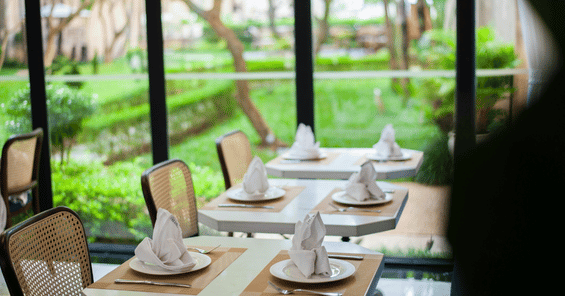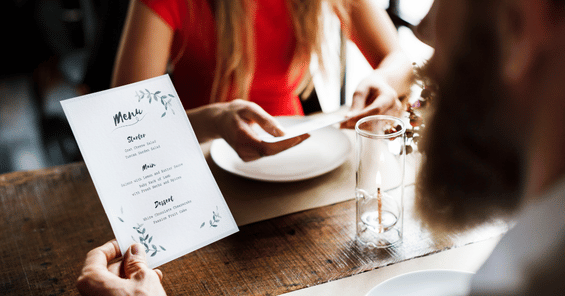
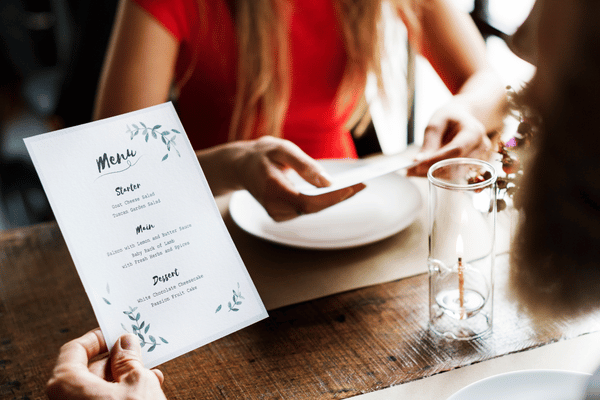
Restaurant Menu Design Best Practices to Drive Sales
Explore insights on restaurant menu design best practices, menu types, effective design elements, and menu examples to elevate customer dining experiences and boost your business's bottom line.
On average, customers spend 109 seconds looking at a menu.
To make the most of these seconds, it’s crucial to have a a well-designed menu in place that not only looks good, but also drives sales.
Whether you’re looking to design your first restaurant menu or adjust an existing menu, there are best practices to follow to improve profitability.
In this article, we’ll take a deep dive into these restaurant menu design best practices as well the types of restaurant menus, the most effective design elements you’ll want to include, and menu examples.
Let’s get started!
Restaurant Menu Designs
Increase sales and boost your bottom line with a well-designed menu template fit for your needs. Easily edit menu item descriptions, move elements, and add photos to create a menu ready to print and distribute.
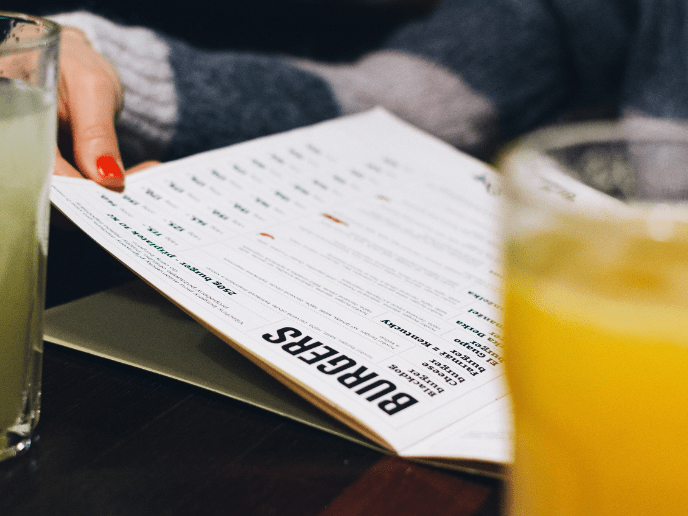
Why Restaurant Menu Design Matters
With 85% of diners looking up menus online before deciding on a new restaurant, they often serve as the first point of contact between your restaurant and potential customers.
While designing a standout menu may seem daunting, the right choices can yield significant rewards and sales.
Thoughtful menu design enhances dining experiences, communicates your restaurant’s story effectively, guides diners to certain buying decisions, and boosts your bottom line.
Types of Restaurant Menus
À la carte menus feature a wide range of dish options, each priced individually and separated into sections including appetizers, entrees, sides, desserts, and drinks. These menus are common in casual and fine dining restaurants, as they offer patrons a flexible way of choosing a combination of dishes tailored to their preferences.
Fixed menus have a limited number of dishes that typically stay consistent over time. Dishes include combo and value meals that guests familiarize themselves with and expect each time they return. Fixed menus are great for establishments that prioritize speed of service, ease of preparation, and limited inventory. If you run a fast-food or quick-service restaurant, a fixed menu is the right fit for your business.
Digital menus are accessible via QR codes on a table, digital displays behind counters or self-service kiosks, tablets, or websites. They typically include interactive elements, images, and personalization and offer a convenient and efficient way for customers to place orders. Implement digital menus if you need a dynamic menu that’s adaptable and can quickly reflect items’ availability and pricing changes.
Seasonal menus change - you guessed it - with the seasons. These menus are popular with restaurants focusing on providing fresh, local produce, and creating dishes with ingredients at their seasonal peak. For those looking to lower their ingredient costs, offer higher-quality dishes, and reduce their inventory waste, seasonal menus are a great choice.
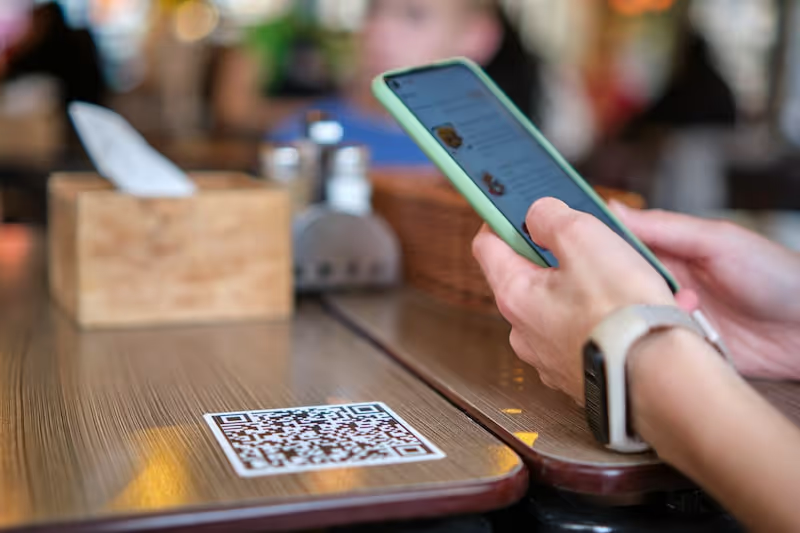
Best Restaurant Menu Design Elements
Your restaurant’s menu design influences the dining decisions your customers make and their overall dining experience. There are key elements that effective menus have to drive the decisions you want them to take, whether that’s highlighting the uniqueness of your brand or drawing attention to certain dishes.
Photos
Studies show that simply including high-quality images in your menu can increase sales by up to 30%. There’s limited space on a menu, so how do you decide which ones to use to avoid visual overload? Select pictures that showcase signature dishes, have good lighting, are plated aesthetically, and highlight items that yield the highest profit. The ones you choose will inevitably reflect the overall style, quality, and vibe of your restaurant, so take the time to choose carefully.
Well-written descriptions
When choosing between two types of menu listings let’s say “beef burger” vs. “hand-formed Angus patty draped in rich, melted cheddar”, more often than not, the latter will attract more eyeballs and ultimately, more orders.
Use descriptive and appetizing language that highlights the uniqueness of each dish. If you’re beginning to write descriptions from scratch, here are some helpful questions to get you started:
- What are the key features of this dish?
- What sensory words can describe the taste and texture? (Ex: crunchy, zesty, creamy)
- How can I convey the quality of the ingredients? (Ex: grass-fed, organic, local)
- Does the description align with the pricing?
As you write your descriptions, keep the descriptions concise, add allergen and dietary restrictions, and recommended pairings.
Color scheme
Colors play a crucial role in setting the mood of your menu, communicating your brand identity, and setting a visual hierarchy.
Choose a color scheme that complements your restaurant's theme and ambiance. If your establishment is a sustainable, seaside coffee shop, consider blues and greens to reflect the sea and the business’s ethos.
If you run a fine-dining restaurant and want to communicate an intimate and luxurious environment, consider using darker shades instead.
Tip: Look to your restaurant’s logo to draw out colors for your menu to keep your branding consistent.
Consistent font
When choosing a font, it’s easy to feel overwhelmed with all the options available. Our best tip: keep it simple and keep it consistent. The goal is to create a readable menu that’s legible and accessible to all diners. The size of the fonts will change depending on the size of the menu itself.
Typically font size ranges include:
- Main Headings (“Appetizers”): 14-18 pts
- Sub-Headings (“Pasta”): 12-14 pts
- Descriptions: 12-14 pts
- Pricing: 10-12 pts
Use two or three complementary fonts to maintain consistency and hierarchy in your menu's text. For instance, you may use a serif font for section headings and a sans-serif font for your descriptions and prices.
5 Menu Examples
Coffee Shop Menu
Coffee shop menus typically have an inviting and minimal feel with lots of white space to emphasize simplicity and ease of ordering. They can be physical menus such as single-page sheets or small booklets, wall board designs, or digital menus. It typically features a variety of coffee drinks along with descriptions of their origins and brewing methods.
Features:
- Clean, minimalist design with lots of white space
- Use of modern, sans-serif fonts
- Detailed descriptions of coffee origins and flavor notes
- Layout organized by type of coffee preparation
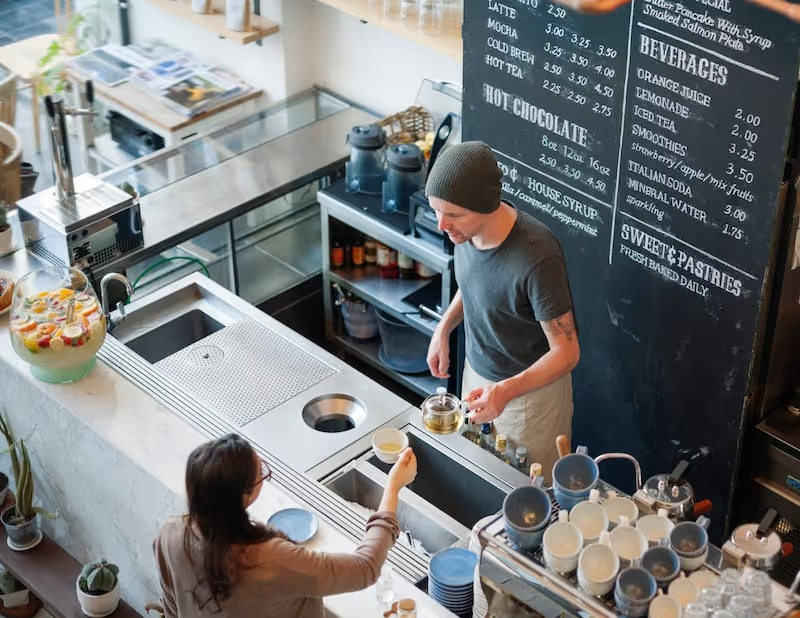
Quick-Service Restaurant Menu
Menus for quick-service restaurants often feature bold colors and simple layouts with clear categorizations. For efficiency and clarity, they may assign numbers to offers, visually highlight promotions and combo deals using shapes and colors, or install self-service kiosks.
Features:
- Bright, eye-catching colors to grab attention
- Large, bold fonts for easy readability
- Icons or pictures representing food categories
Cocktail Bar Menu
Cocktail bar menus will vary widely depending on the type of bar and variety of its offerings. For example, a specialty cocktail bar may opt for a single-column menu, whereas one that offers food, wine, and beer will need a multi-column layout with multiple headings and sections.
Features:
- Layout segmented by type of drink
- Descriptive text
- Visual elements of drinks
Brunch Menu
A brunch menu combines breakfast and lunch dishes, offering a mix of savory and sweet options. The design of brunch menus is often light and airy, using pastel colors and lots of white space, but it’s not set in stone. Feel free to play around with the design of this type of menu, since the atmosphere of each brunch restaurant varies and should be reflected in the menu style.
Features:
- Casual, readable fonts
- Photos or illustrations of key dishes
- Divided sections between breakfast items, lunch options, kids’ menu, and beverages
Fine Dining Menu
Fine dining menus often feature rich textures and deep colors with multiple pages and high-quality materials such as leather-bound booklet covers.
Features:
- Leather-bound cover or heavy, textured paper
- Elegant, sophisticated fonts
- Subtle use of colors, often monochrome or with metallic accents
- Carefully curated sections for appetizers, entrees, desserts, and a wine list
- Detailed descriptions of preparation
How to Design a Restaurant Menu
1. Organize Items by Popularity and Profit
Before you jump into designing your menu, finalize the content first. How many menu items should you include? How do you prioritize what to display?
Conduct a menu audit by writing out all menu items, ordering them by sales volume, and listing the cost of each dish’s ingredients. Label each menu item as a cow, star, question mark, or dog depending on their popularity and profit.
Here’s a quick guide:
- Cows: are popular but yield low profits
- Stars: are the most popular and most profitable
- Question marks: yield high profits but are not the most popular
- Dogs: are not popular or profitable
The label of each menu item will affect where they should be placed in the menu’s layout.
2. Choose The Right Menu Size and Display Type
The size of a restaurant menu will depend on the type of restaurant and the content amount and type displayed. For example, cocktail bars may use a smaller menu that servers can leave on the table without it getting in the way of diners, while fine dining restaurants may use larger formats bound in a booklet.
Common restaurant menu sizes include:
- Standard Letter: 8.5” x 11”
- Compact: 4.25” x 11” or 5.5” 8.5”
- Full HD Digital Board: 1920px x 1080px
Tip: If professional restaurant menu design costs don't fit into your budget, opt to build a design using free tools such as Google Docs that support menu templates for cover design ideas and various page and book layouts. Access our free menu design templates here.
3. Limit Choice
Offering too many menu choices can overwhelm patrons, leading to "choice paralysis" where they struggle to make a decision or simply opt for familiar items.
Limit each section of your menu to seven items in total wherever you can to prevent decision fatigue and help guide customer choices.
4. Use The Golden Triangle Principle
When looking at a restaurant menu, people typical scan the page in a particular order first looking to the middle, then to the top right, and then to the top left. This is known as the Golden Triangle.
Boost the visibility of certain sections and enhance sales by strategically positioning high-margin items and specials (stars and question marks) within this area to direct customers' attention.
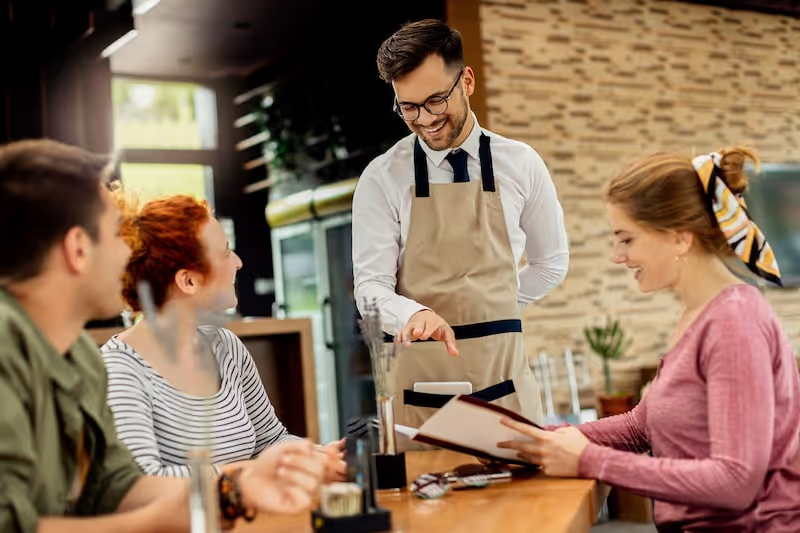
5. Highlight Specials
Certain design elements such as boxes, bold fonts, and contrasting colors can help further draw attention to various parts of a menu. Implement these elements sparingly to highlight recommended dishes, new menu items, or specials and drive sales.
6. Cross-Sell & Upsell Items
Encourage customers to add complementary items to their orders by including pairing suggestions under high-margin dishes. By cross-selling, you can increase overall sales by adding more items to the order. This can include suggesting side dishes with a steak order or a wine pairing that goes well with a main course.
To upsell, subtly encouraging customers to order more expensive items, include menu modifiers. These can take shape of including burgers by the ounce, wine by the glass size, or sparkling water in place of tap water.
7. Upload It Online
Once you’ve finalized your menu's content and design, consider creating a digital version to extend reach.
Establish a dedicated menu page on your restaurant’s website to make it SEO-friendly. This approach enhances your visibility in Google search results, increasing both online engagement and physical foot traffic. You can also add your menu to your restaurant’s Facebook page by uploading images or a PDF to cater to an even larger audience.
8. Update Your Menu Regularly
Building out a profitable menu is a continuous process that requires frequent updates based on its performance. Keep an eye on items’ sales volume to stay ahead of your menu design and ensure long-term profitability.

Gain access to menu profitability reports, monitor ingredient price fluctuations, and view gross profits with a robust cloud-based restaurant inventory management system. With MarketMan, identifying your most profitable dishes has never been easier. Build margin-rich recipes with ingredient-level cost breakdowns, analyze the profit of every dish with integrated POS price tracking, and get dynamically updated costs right on one easy-to-use platform. Book a demo today to chat with one of our experts and see it in action!
Author
Contributors
If you have any questions or need help, feel free to reach out
Don't miss out on maximizing your restaurant's profits! Calculate your ROI with MarketMan
Join over 18,000 restaurants and get the hottest restaurant tips delivered to your inbox
You may also be interested in
Ready to get started?
Talk to a restaurant expert today and learn how MarketMan can help your business




